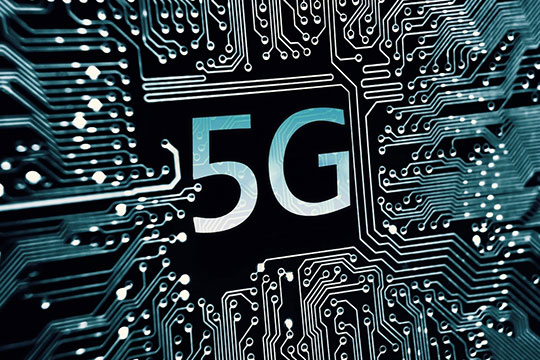TECHNOLOGY FOCUS
It is anticipated that future wireless networks will incorporate, among the others, the following paradigms:
1) Include massive number of network elements and serve very dense population of users (Internet of Things and People)
2) Operate with low energy consumption
3) Operate under different business models joint multi-operator spectra/infrastructure management.
4) Massive use of Artificial Intelligence (AI)
For efficient control and systematic design of these networks necessary modifications of the general complex networks theory tools are required.
The technology enablers are based on Software Defined Networks (SDN) and Network Functionality Virtualization (NFV). These paradigms enable Wireless Network Slicing (WNS) which is basis for micro trading of the resources in multi-operator network management. Network densification and high sophistication of the relation between multiple operators and network elements require network management solution based on Artificial Intelligence (AI).
These new incoming technologies will be in the focus of the course.


COURSE CONTENT
The new incoming technologies mentioned in technical focus will be in the focus of this course.
The course covers joint design of technology and business models in communication networks.The technology enablers are based on Software Defined Networks (SDN) and Network Functionality Virtualization (NFV). These paradigms enable Wireless Network Slicing (WNS) which is basis for micro trading of the resources in multi-operator network management. Network densification and high sophistication of the relation between multiple operators and network elements require network management solution based on Artificial Intelligence (AI).
WHO SHOULD ATTEND
The course covers joint design of technology and business models in communication networks. Participants with background in either networks design or networks/internet economics should benefit from participation.
The focus is on 5G networks and participants with general background in networks will be able to follow the course. This includes researchers, students and professors in academia as well as industry, networks operators, regulators and managers in this field.

The course starts with a survey of the current state of the art of 5G, standards, trials, challenges, deployment, and practice and based on this offers a vision of 6G Wireless Systems mainly applications trends, technologies, and open research problems. It covers also visions of using the band above 100 GHz, wireless network intelligence and quantum machine learning for 6G.
Wireless Networks Today and Trends
- 5G state of the art: An overview of standards, trials, challenges, deployment, and practice,
- A Vision of 6G Wireless Systems: Applications, Trends, Technologies, and Open Research Problems
- Wireless Communications and Applications above 100 GHz: Opportunities and Challenges for 6G and Beyond
- Wireless Network Intelligence at the Edge
- Quantum Machine Learning for 6G Communication Networks: State-of-the-Art and Vision for the Future
New Network Paradigms
- Heterogeneous WLAN/macro/femto/small cells/edge/fog
- Heterogeneous WLAN macro/femto/small cells
- Multi-hop Multi-operator Multi-technology Networks/Network de-fading
- Software Defined Networks (SDN)
- Network/Functionality Virtualization
- Network Slicing
Spectrum Solutions
- Millimetre Wave Technology
- Multi-operator Spectrum Sharing /Traffic Offloading
- Cognitive Networks/Semi Cognitive Networks
In the next section we will discuss the need for join optimization of the technology and new business models in communication network. User terminal becomes an active consumer and provider of network resources and as such becomes a partner in network resource trading. As a result a new concepts in monetary (digital payment) systems as block chain technology are needed. Since the density of the networks is expected to significantly increase in this segment we also discuss methodology available within networking sciences for complex network design.
Network Optimization and Stability
- Networks Economy/Network Slices Trading
- Bitcoin & Block Chain Technology
- Computing Clouds/Network Stability
- Self-Organizing Networks (SON)
- Massive MIMO/ Pros and Cons
Complex Networks for Military Applications
- IoT Models/Low Latency High Reliability/Robustness Solutions
- Network Reconfiguration
- DNA Networks
- Edge/Fog Computing/Energy Trading
- Economics of DNA Networks
- Standards
- mission specific network optimization
- tactical networks
- 3D spectrum management optimization in tactical networks
- trends in network security solutions
Increased network density and direct interaction between any elements in the network makes the network control more and more complicated and a need for the help of artificial intelligence (AI) in this segment is evident. Within this segment we will discuss a number of examples where AI is used to learn/predict the network parameters and then optimize dynamically the network architecture to improve the performance.
Artificial Intelligence in Networks - I
- AI applications in the Telecommunications Industry
- Artificial Neural Networks
- Explainable Machine Leraning
- Q-Learning /Channel and Power Level Selection by D2D
- SON/A Reinforcement Learning Framework
- AI for Proactive Cashing
Artificial Intelligence in Networks - II
- AI/Online Resource Allocation/Big Data Learning
- Prediction of VNF Resource Requirements/Graph Neural Network‐based Algorithm
- Indexability of Restless Bandit Problems / Whittle's Index for Dynamic Multichannel Access
- Learning /Caching in Heterogeneous Small Cell Networks

